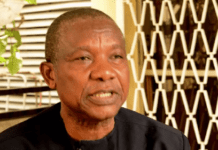Discussions at the ongoing AIDS conference in Durban, South Africa, have focused on the dearth of homegrown scientific solutions to HIV/AIDS on the continent.
This comes as participants at the conference say that many of the breakthroughs in the treatment and control of the viral disease are coming from abroad instead of within.
According to them, donors from the United States of America and other developed nations commit more funds and resources to HIV/AIDS programmes compared to governments in Africa, the region that is most affected by the disease.
The Executive Director, Joint United Nations Programme on HIV/AIDS, Dr. Michael Sidibe, who spoke at the opening plenary, stated that 95 per cent of antiretrovirals, a drug used by persons living with the disease, came from India and other Asian countries.
Apart from drugs, Sidibe noted, more than 50 per cent of funding for HIV/AIDS programmes in Africa were borne by donor organisations in the US and Europe.
He warned that Africa’s dependence on foreign aids and drugs could frustrate efforts toward eradicating the disease by 2030.
The UNAIDS chief challenged African scientists and pharmaceutical companies to reverse the trend by investing in local manufacturing of antiretrovirals.
Sidibe added, “Today, 90 to 95 per cent of patients are undergoing treatment, thanks to drugs which come from abroad, precisely India. It is therefore time for Africa to produce its own drugs.
“It is impossible to think that in future we will continue to treat patients for the next 20 or 30 years with the belief that these drugs will come from the North.”
Urging African governments to increase their support and funding, he warned that some international donors might reduce their funding due to global economic challenges.
Sidibe said, “Between 2015 and 2016, 13 of 14 donors reviewed their financing for the fight against HIV/AIDS. We noticed a reduction of about seven per cent. This bothers me because if we have difficulty putting patients under treatment, the number of cases as well as resistance could increase.”
Meanwhile, a former Lagos Coordinator, Network of People Living With HIV/AIDS in Nigeria, Ibrahim Umoru, said HIV/AIDS patients might suffer more if the government did to increase its domestic funding of HIV/AIDS treatment programmes.
Umoru said, “PEPFAR has been funding HIV/AIDS treatment for the past 10 years. Two years ago, they began flat funding and downsizing. That is why many of the services are no longer free.
“Many do not have money to pay for drugs and treatment. Are we then saying that they should go to their graves? Nigeria has the highest burden of people living with the virus, yet foreigners are paying the bills.
“The Federal Government contributes just five per cent, Global Fund gives 25 per cent and PEPFAR contributes 75 per cent. We know that if Nigeria wants to pick the bill, it has the resources.
“The problem is that those at the helms of affairs in the country just do not want to do it. If Nigeria is truly sincere about HIV/AIDS, foreign governments should not be the major investor for over 10 years.”
The Punch













